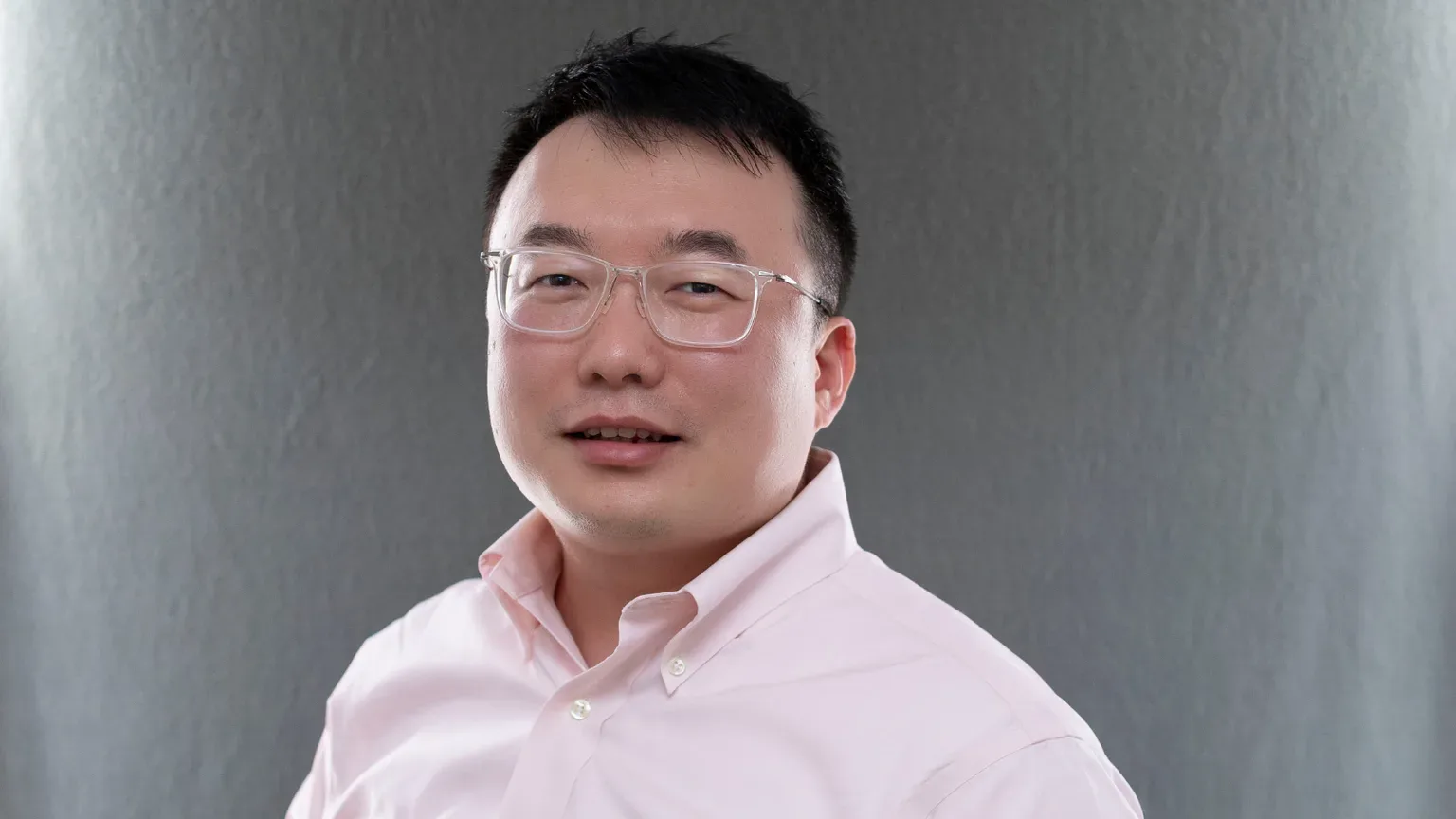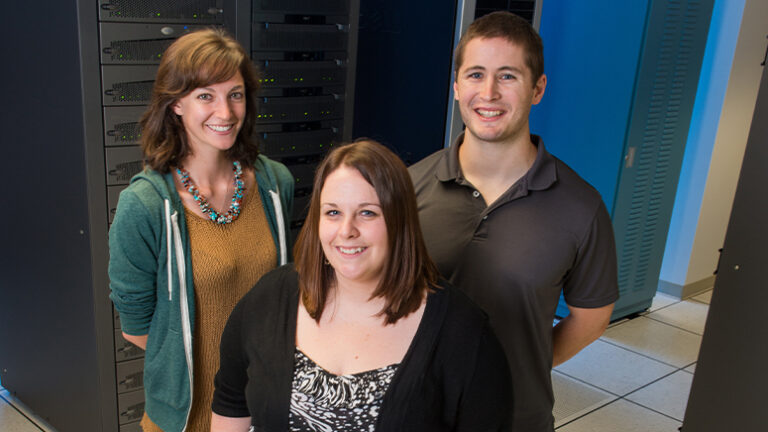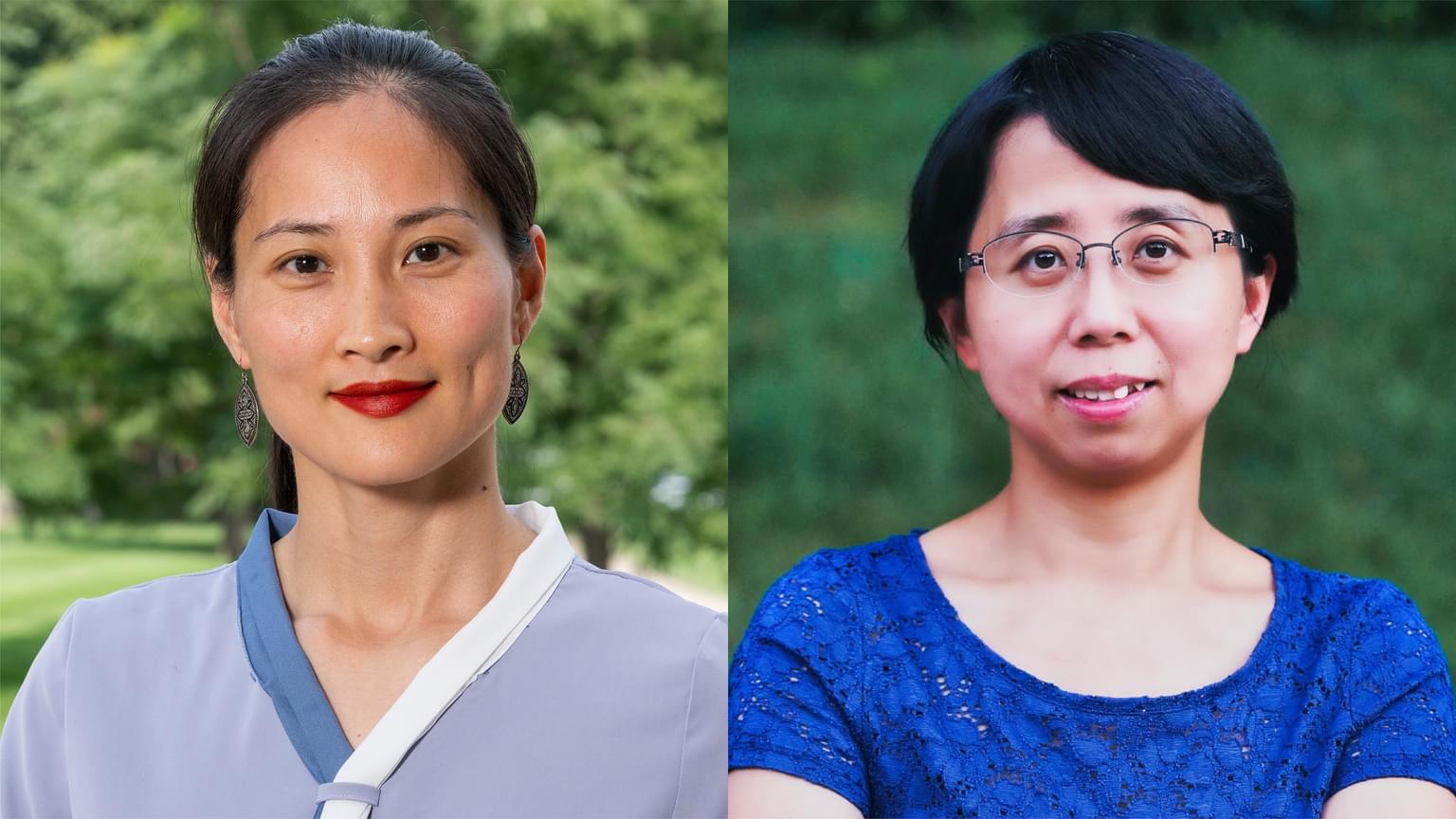Stowers partners with University of Oregon to train computational biologists
Some students may gravitate to the coasts to get tech-savvy. But this year three University of Oregon (UO) graduate students headed to Stowers to learn how to apply computer analysis to molecular genetics, a booming discipline known as bioinformatics.
To earn a master’s degree in that field, UO students first take statistics and programming courses on the Eugene campus, then intern for eight months in academia or industry. For the class of 2013, Stowers was a popular option: of six students, half interned here. They included Allison Burns and Richard Dannebaum, who worked in Peter Baumann’s lab, and Ashley Woodfin, who worked with Rong Li.
Stowers genomics scientist Marco Blanchette, PhD, who interviewed the interns in Eugene, says the demand for biologists proficient in data analysis has skyrocketed due to next-generation sequencing technology, which allows analyses of entire genomes. “Once biologists evaluated a thousand nucleotides a week,” he says, referring to DNA’s building blocks. “Now we generate billions of nucleotides of sequencing data a week. We need people who can translate questions asked by biologists into software.”
If Woodfin’s experience is typical, the need is acute. As a UO molecular biology undergrad she realized that interpreting masses of sequencing data might soon form the basis of a majority of biological assays. “But I hadn’t met many PhD students who knew how to analyze their own data,” she says. “If I were to pursue a
PhD or a career in biology, I would want to know how to analyze my own data.”
The Stowers interns seem to have accomplished that goal. Burns, who majored in biology at UO, admits she was a complete novice in bioinformatics when she started the program. “But now I can hold my own in the field,” she says.
Nonetheless, some hesitated to leave a campus described on its website as, “Oceans, Mountains, and Everything In Between.” Dannebaum, a snowboarder and hiker, initially balked at moving to the Midwest but changed his mind after researching Stowers online. Mentored by both Baumann and Blanchette, Dannebaum has refined his programming skills as he compared global RNA expression patterns in yeast mutants. And he is impressed by Stowers’ collegiality. “Every door is open here,” he says. “You don’t have to stay at your level of the totem pole.”
Friendship between the program’s co-creator UO biochemist Andy Berglund, PhD, and Baumann initiated the Stowers/UO collaboration. Both were postdocs in the same lab at the University of Colorado, and after visiting Kansas City, Berglund came away impressed by Stowers’ technical prowess and philosophy. When he approached Baumann about participating in the traineeship, Baumann knew it was a plus for both.
“The UO students have the opportunity to work on diverse computational problems, while Stowers gets a group of motivated entry-level analysts who are eager to learn more,” says Baumann, noting that some students may consider the Stowers PhD program or apply for full-time jobs at the institute.
He may be right: Woodfin, Burns, and Dannebaum officially received master’s degrees in biology with an emphasis in bioinformatics this September, and each will remain at Stowers for a while as analysts. Meanwhile, Blanchette and Baumann traveled to Eugene in August to chat with ten new members of the UO bioinformatics class of 2014. “We had a thoroughly positive experience with students in the first class,” says Baumann. “We are very enthusiastic about continuing this partnership.”



